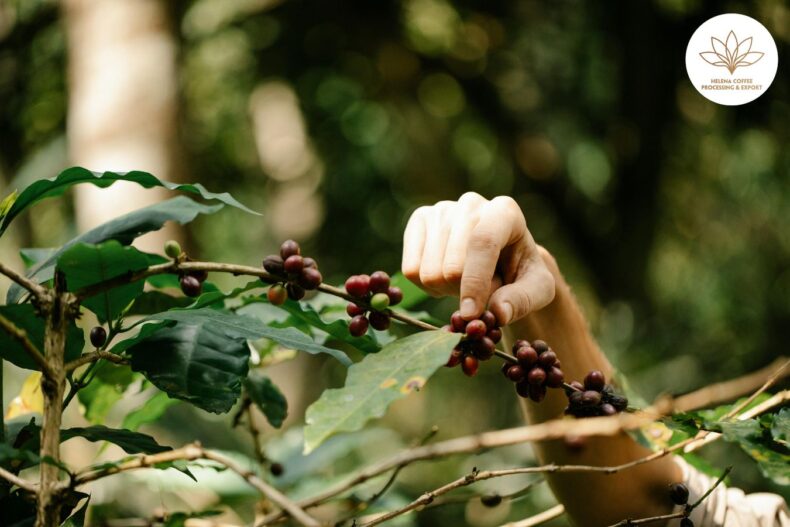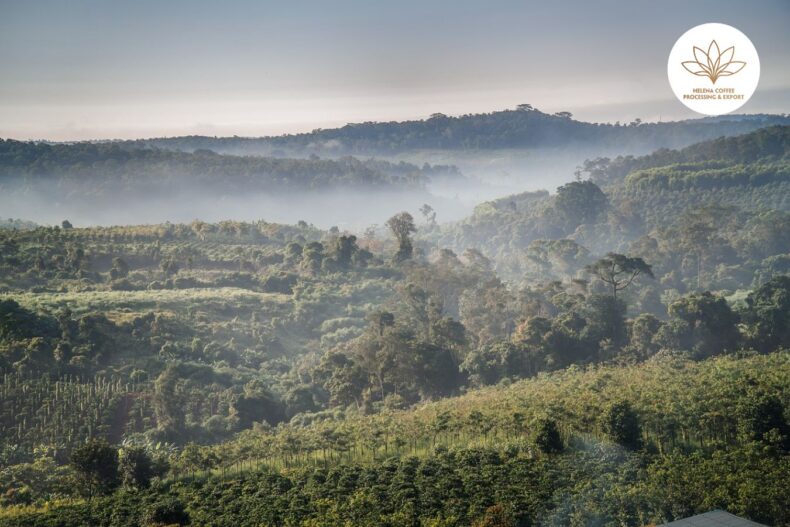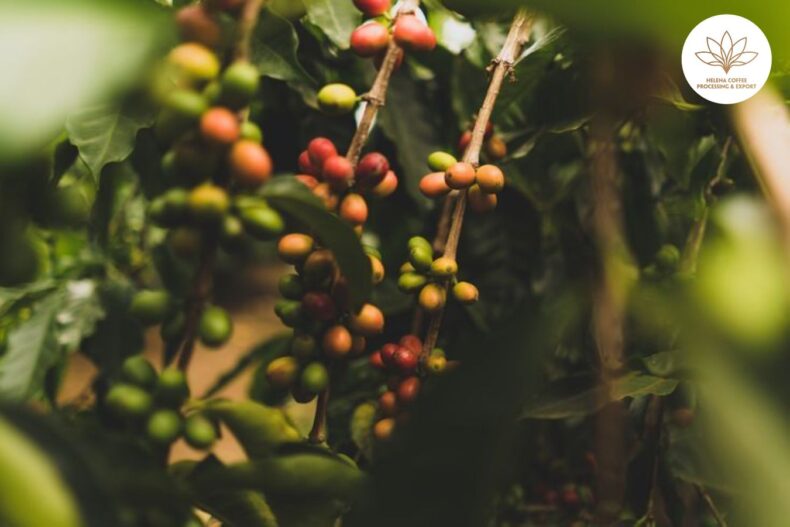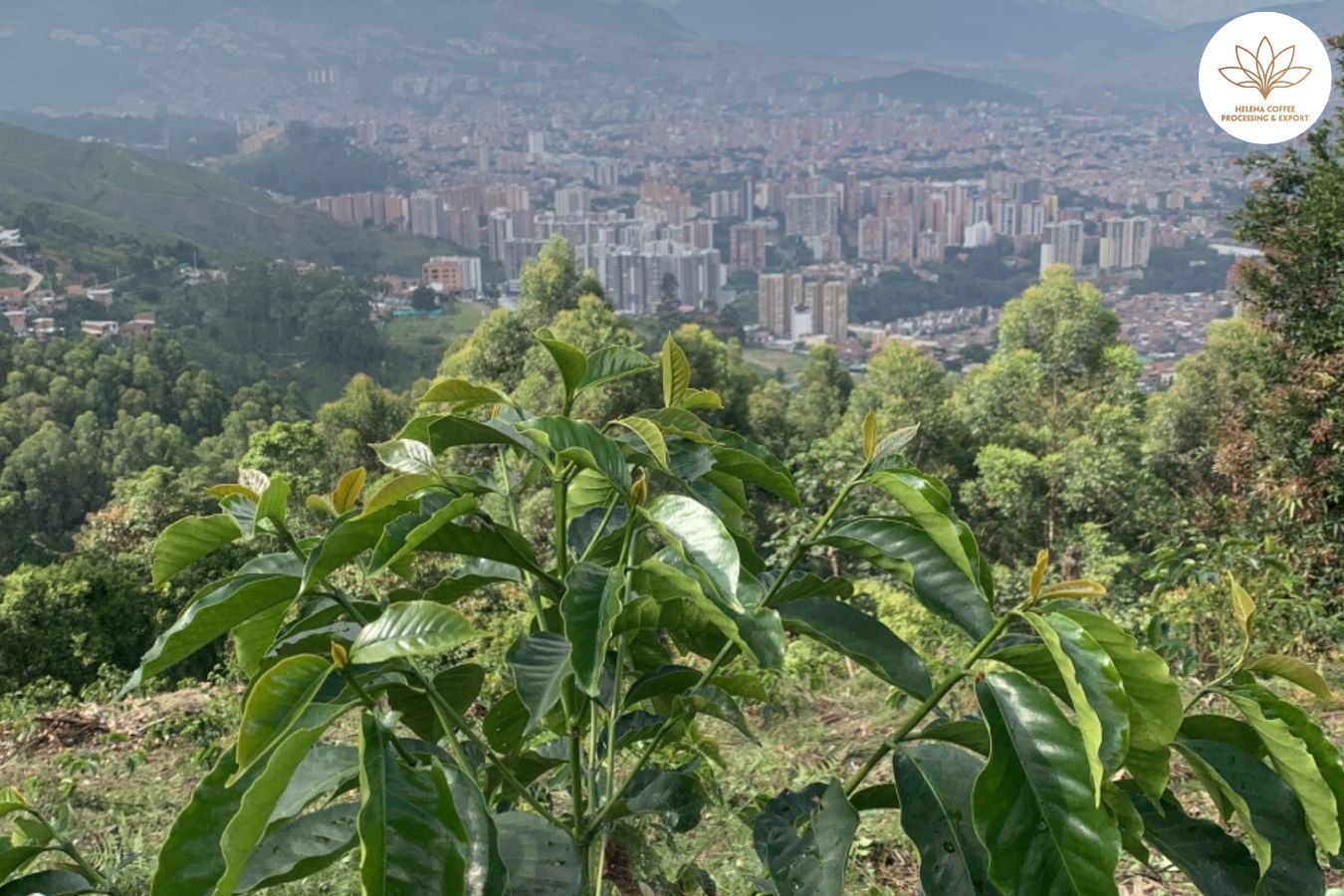
Urban coffee farms in Medellín: Medellín’s cultural roots with the coffee tradition have been a very significant element for the city and its inhabitants for many years; However, the urban expansion generated by population growth has transformed old farms into new buildings.
As time has passed, many people have left their crops behind to pursue the sometimes utopian progress that the city offers. In contrast, some coffee farms resist this transition and continue working to maintain the smell of mucilage, pulp and roasted coffee in the vicinity of Medellín.
Today, the city has around 400 coffee-growing families, mostly small coffee growers, but many of them see the need to obtain alternative employment . To learn about the reality of urban farms in this area of Colombia, I spoke with Rosa Eusse and José David Posada, two coffee producers. Continue reading and find out what they told me.
The context of the city
The Territorial Planning Plan (POT) is an instrument that guides and manages the physical development of the territories and the use of land in Colombia. Although lately Medellín has not grown freely but upwards, with large constructions, this mode of territorial administration determines whether an area is considered urban or rural.
Tax obligations are not alien to the challenging landscape of coffee growing since the administration and use of the land is costly and although it is a relief for those who appear as rural areas, it is a tightrope for those who appear as an urban area.
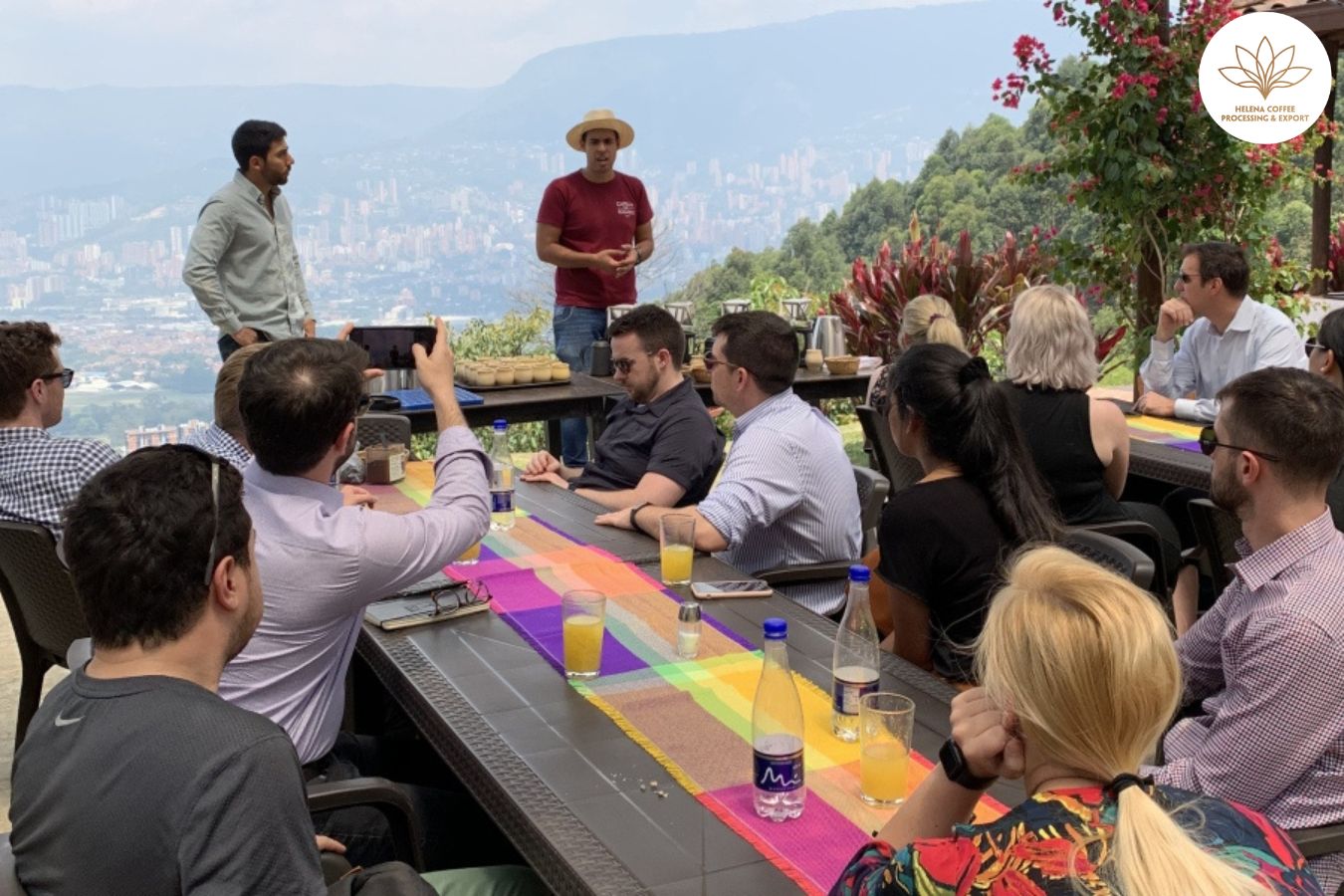
“Seeing that despite all the complexities of traditional coffee growing, coffee was not being profitable anyway, we decided to enter the world of specialty coffee; However, our taxes are approximately 70 times higher because we are within the city,” says José Posada, owner of the Capilla del Rosario farm in the Belén neighborhood of Medellín.
Furthermore, gaps in legality are challenging for many farms due to the different social problems that Medellín has suffered in past decades, such as violence, drug trafficking, micro-trafficking and invasions, and peasant labor is increasingly diminishing with the phenomena of globalization and innovation of which Medellín is a living example.
On the other hand, when talking about labor it is important to recognize that if the reduction of collaborators in the towns is already one of the main causes of the increase in the costs of coffee production and other agricultural or livestock activities, the reality becomes much more complex in the city because manual agricultural work competes directly with large industries and with more formalized jobs than those that coffee growing can offer, due to the constant migration experienced by the pickers .
Likewise, labor in coffee does not only refer to harvesting. Other tasks such as digging, planting, plowing and cleaning, pruning and fertilization also require a labor force that is increasingly exhausted and difficult to find. There, precisely, is another of the great challenges for producers, even more evident when they are located in urban areas.
Diversification and collaborative work
“When we started working in the La Sierra neighborhood, about 35 years ago, one of the deals we made with one of our neighbors was to work hand in hand and that’s how we managed to do the work on the farm,” says Rosa Eusse. about the collaborative way in which coffee growing is developed in his community and on his La Increíble farm.
Collaborative activities are important when it comes to obtaining labor for the development of coffee growing and, in addition, they help reduce costs and be financially more sustainable in exchange for collaborating in other productive units during the days in which the activities of the own farms have already been carried out.
In a scenario in which production costs continually increase and labor is increasingly scarce, alternative activities associated with coffee growing, such as tourism and associated crops such as vegetables, flowers and fruits, can make a difference for the permanence of urban coffee farms.
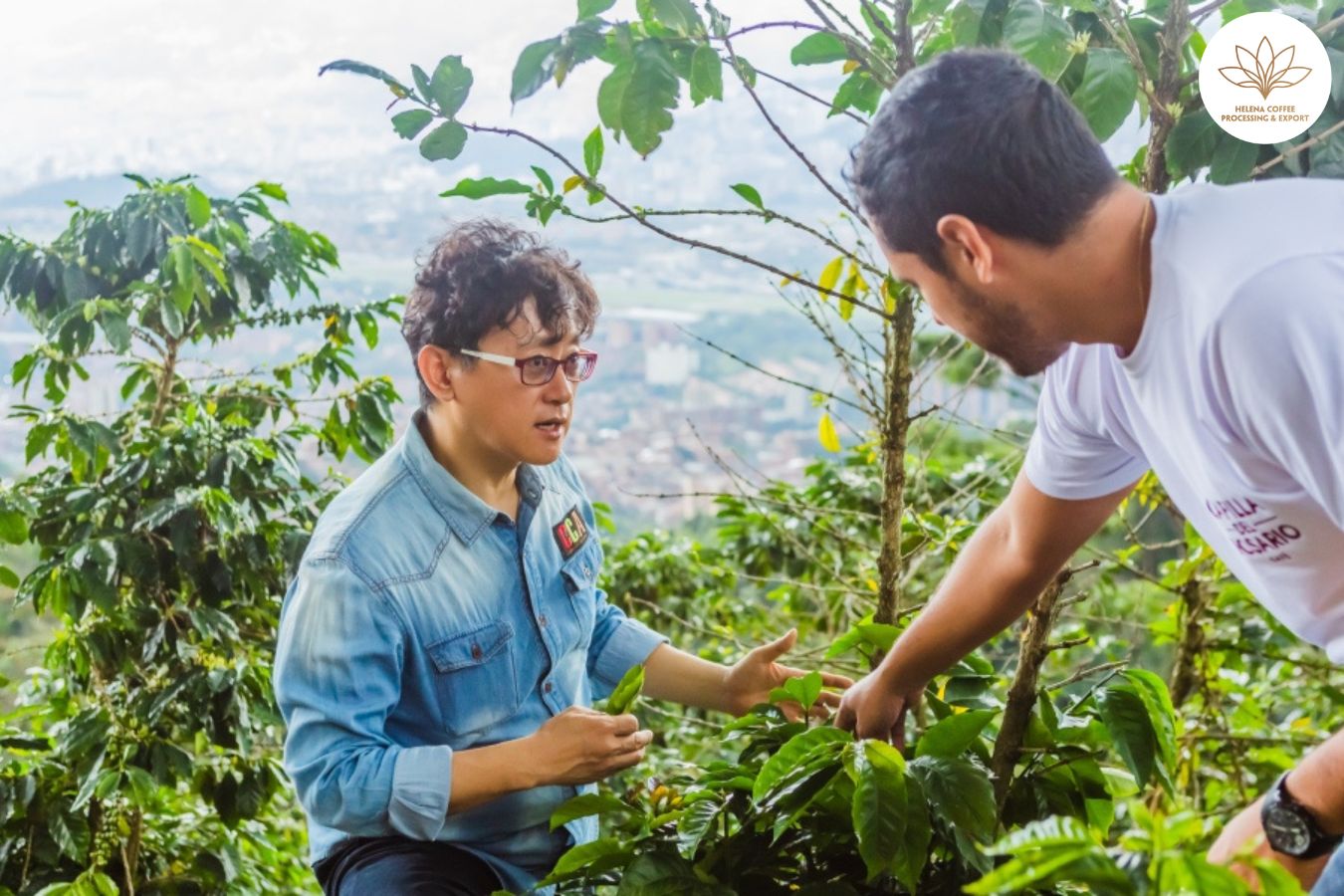
For example, José David explains how his diversification has been: “by paying more taxes we began to trace different routes: education, tourism and specialty. We start with specialty because it is the task that takes the longest taking into account the time it takes for trees to develop.”
Later, he continued with education and created relationships with different universities and institutes to take advantage of his location and educate people regarding consumption, production and the entire supply chain. Finally, he started working in tourism . As he explains, this area offers “quite a big possibility because you can sell roasted coffee directly on the farm and take advantage of the global marketing that Colombia has done with respect to coffee.”
How to maintain coffee production in the city?
Education regarding coffee consumption communicates the value of coffee growing and promotes the cultural identity of Medellín. When transmitted to the younger population, it promotes the continuity of a coffee tradition that relies on new technological tools to bring the urban population closer to the countryside.
Rosa says that “the situation in the countryside is difficult because there are really no people who want to work in it today. For this reason, in our project we work with the school, motivating young people so that they are the ones who help the countryside in the future and this is a mutual benefit.” Exploiting this territorial proximity is an opportunity that few coffee farms have in producing countries, which are usually remote and difficult to access .
In that sense, the urban coffee farms of Medellín are within the reach of citizens and the thousands of tourists who visit the city every year. In this way, generating closeness and interaction between these 400 coffee-growing families and consumers becomes a reality.
In turn, education in the consumption and production of differentiated coffees influences the involvement of young entrepreneurs who see coffee as a form of livelihood. Furthermore, the city’s schools and technical programs promote the consumption of more local products and much more direct trade, which increases profitability and recognizes the producer and his work.
As Rosa says, “it is important to show the young people of the neighborhood what we do on our farm, transmit the knowledge to generate interest in them and show them that there are possibilities to get ahead through coffee ” and without necessarily moving away from the helmets. urban areas, a latent concern for new generations.
It is important to recognize that urban farms in Medellín are not only a space for the establishment of crops or spaces for dispersal, they are also biological corridors that allow the conservation of wild species present in the territory, native trees and ecosystems.
Urban coffee growing in Medellín is an exercise in resilience that demonstrates that coffee growing, beyond its need to adapt, manages to transform through its industriousness, effort, passion, drive, solidarity and desire to help others.
FAQS:
